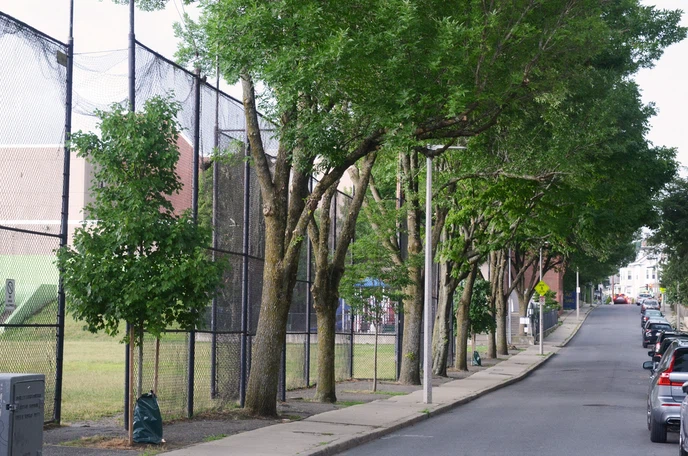A study shows that urban forests in the USA tend to group similar tree species together and rely heavily on introduced species, which may decrease resilience and reduce their benefits for people and animals.
Excessive clustering of tree species in urban forests and overreliance on introduced species may make urban forests more vulnerable to pests or disease and reduce their ecosystem benefits, a study published in eLife shows.
The findings identify critical weaknesses in current tree-planting strategies in cities across the United States and suggest ways to build more resilient and diverse ecosystems.
City trees provide many health benefits to humans, animals and other plants. They are also essential tools in the fight against climate change and pollution because they capture and store carbon, as well as scrub harmful microscopic pollutants from the air.
“Many studies show that urban forests help humans– they save money, clean the air, and more– but few have assessed city tree biodiversity, which protects forests from being wiped out by disease or climate change. More diverse forests also confer greater mental health benefits for humans and support more wildlife,” says Dakota McCoy, a Science Fellow at Stanford University in Stanford, California, USA. McCoy is a co-lead author on the study alongside Benjamin Goulet-Scott, Higher Education and Laboratory Coordinator at Harvard Forest, Harvard University’s ecological field station in Petersham, Massachusetts, USA.
To close this critical gap in information, the team collected data on 5.6 million trees in 63 US cities that maintain tree inventories. The data included the trees’ location, species and individual health. They then determined whether the species were naturally occurring or introduced to the area, using information from the Biota of North America Program, which documents the distribution of plants on the continent.
In 47 of the 48 cities with sufficient data, the team found that, even in municipalities with diverse urban forests, trees were often clustered into single-species groups. This clustering may make it easier for diseases and insect pests to spread, such as the infamous Dutch Elm Disease. City parks had more diverse tree communities.
On average, the majority of city trees are introduced species: only 46% of urban trees naturally occurred in their areas. Wetter, cooler cities had more naturally occurring trees, while drier, hotter communities had more introduced species. The team found that introduced species became more predominant in cities located further west. Newer cities had more naturally occurring trees, suggesting that changing practices by city arborists may already be impacting urban forests. All trees, whether introduced or naturally occurring, perform vital ecosystem services in our cities. But naturally occurring tree species are an important piece of the puzzle for creating diverse, resilient ecosystems.
“Naturally occurring tree species support richer local ecosystems and provide essential food and habitats for birds and butterflies,” says Goulet-Scott. “But cities are harsh environments for trees, and we often choose street trees from a short list of hardy species, which may be introduced or naturally occurring. We could see that cities with more introduced trees had similar mixes of tree species and less ecosystem diversity across cities as a result.”
Zooming in on Washington, DC, the team found qualitative socioeconomic disparities in the locations and diversity of trees. More wealthy neighbourhoods had more trees and greater variety than less wealthy ones. The authors say that future analyses of urban forests should factor in neighbourhood socioeconomics. Additionally, they suggest that citizen science initiatives could be used to document bird, insect and plant diversity and assess how well urban forests support these ecosystems.
“We hope our work will empower local decision-makers to select and plant city trees that build resilience against climate change and possible outbreaks of pests and viruses, as well as maximise the health benefits trees provide all city dwellers,” concludes senior author John Kartesz, Director of the Biota of North America Program (BONAP), North Carolina, US.
Read the paper: eLife
Article source: eLife
Image: Mature Ash trees line a sidewalk in Boston, Massachusetts, but where one tree had recently died, a Red Maple was planted instead (left side). Credit: Benjamin Goulet-Scott (CC BY 4.0)






